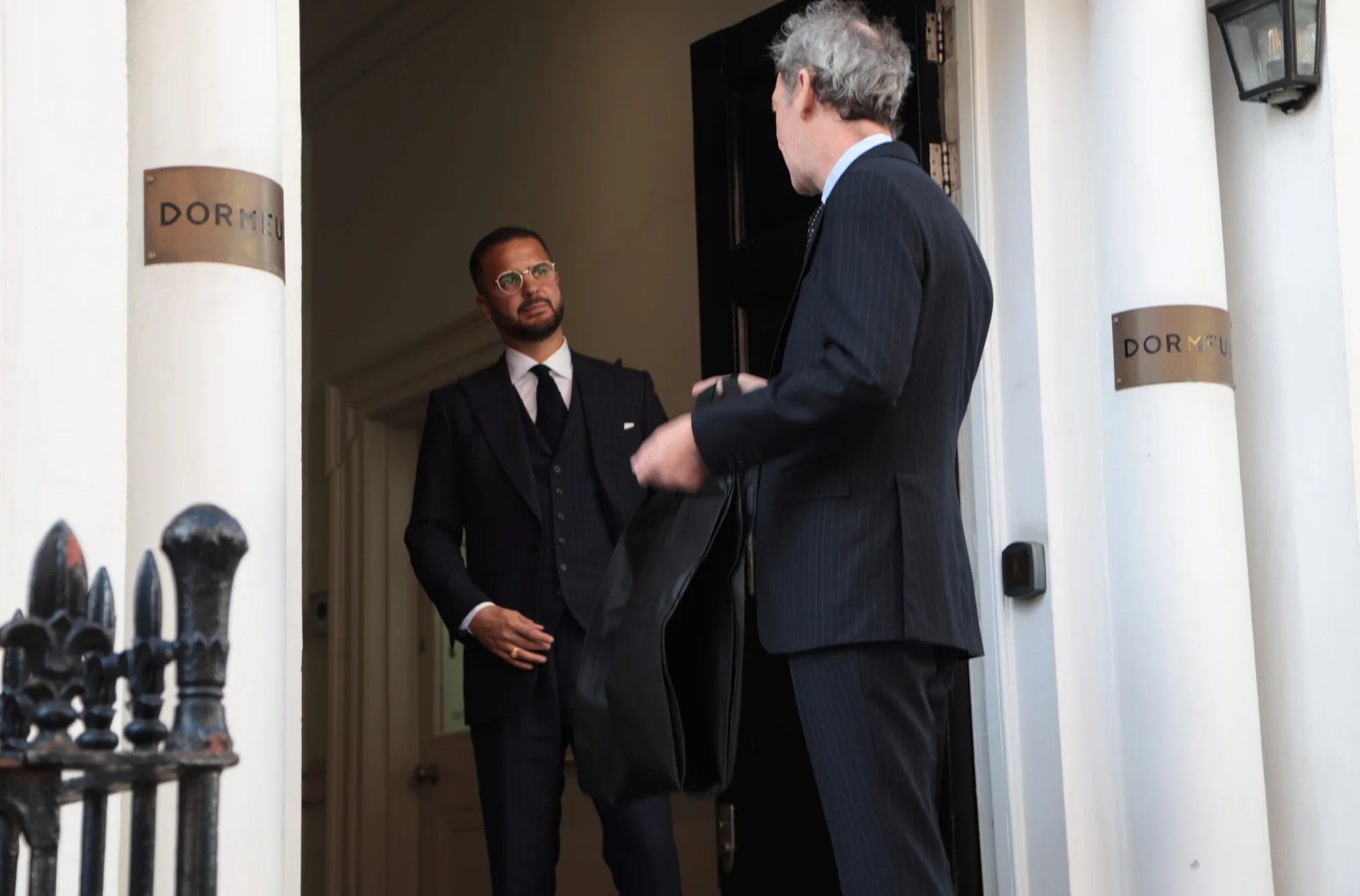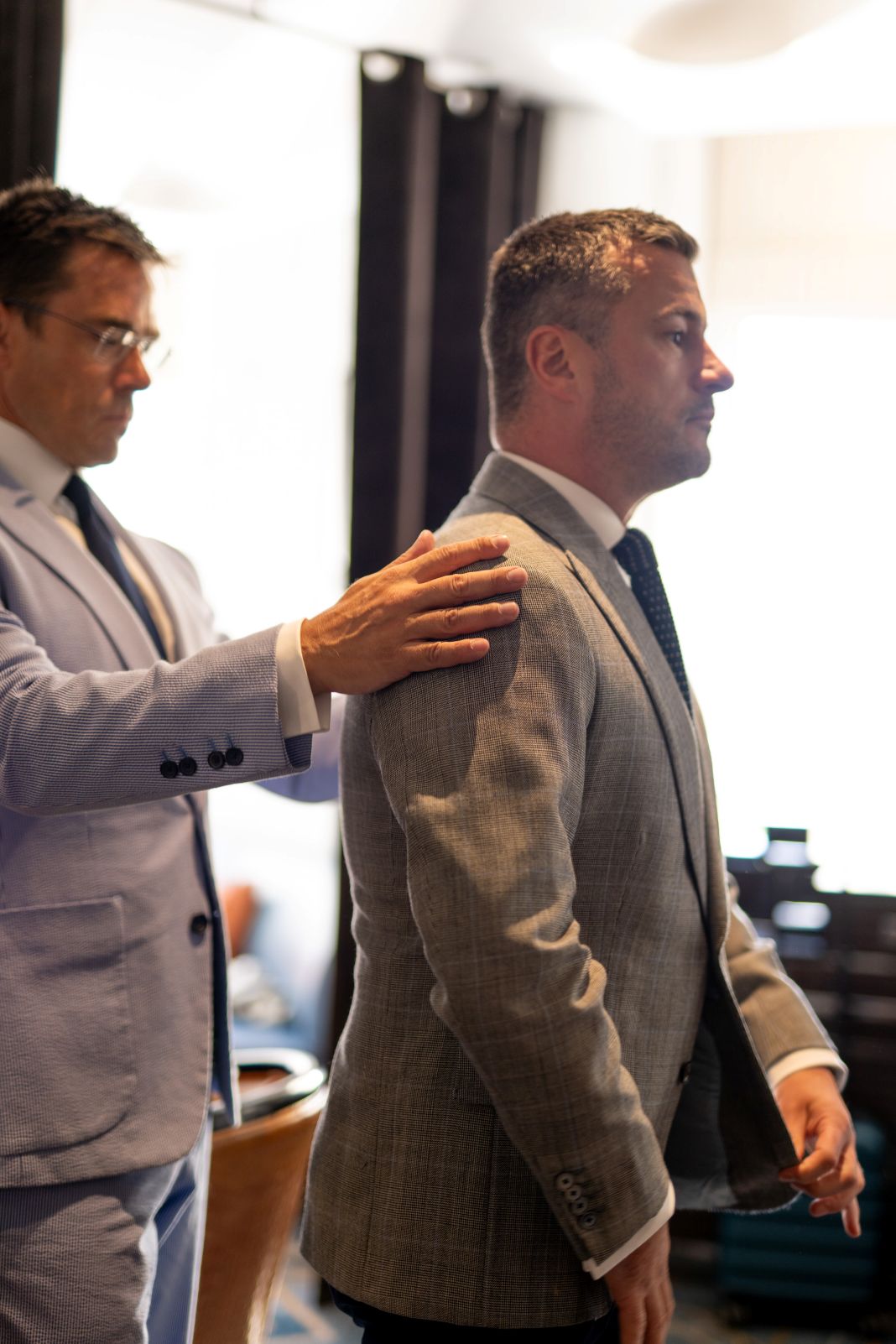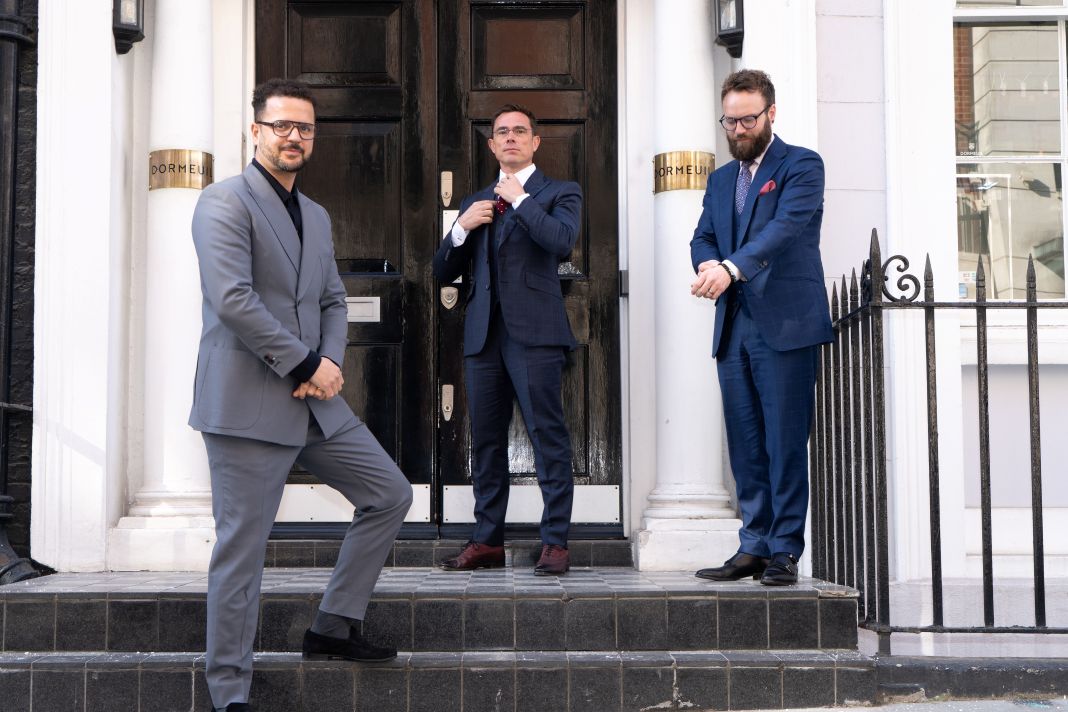What to expect from bespoke tailoring: the full process
A bespoke suit starts with a pattern made just for you, based on your measurements, posture and preferences. It is not based on a standard template. The word bespoke came from Savile Row, where a cloth was considered spoken for once a client had chosen it.
This is not the same as made to measure or off the rack. In the United Kingdom, bespoke is a protected term. Groups like the Advertising Standards Authority and the Savile Row Bespoke Association support its correct use. A bespoke suit involves hand drafted patterns, personal fittings and the skills of a master cutter. For a first suit, knowing what bespoke truly means helps you understand what you are paying for.
What does the bespoke suit process actually involve?
Your experience begins with a bespoke tailoring consultation. Measurements are taken, your style preferences are discussed, and a new pattern is made for you. The tailor creates a basted fitting, loosely stitched for easy adjustments. More fittings follow until the final version is ready.
Why the basted fitting matters
A basted fitting sets bespoke tailoring apart. This stage allows the tailor to make changes before stitching everything permanently. It gives room to refine how the suit drapes, correct balance and adjust for posture. Small issues are easier to fix here than after the suit is finished. This fitting protects the final result.
The full bespoke suit process takes between eight and twelve weeks. Each step, from creating your suit block to building the internal canvas offers a chance to refine the shape. A good tailor will explain this clearly and work at your pace.
Pro Tip: Always attend your basted fitting prepared with questions, it ensures your suit fits perfectly.
Secure Your First Bespoke Suit
Enjoy expert tailoring and a five year guarantee with every suit.
How do I choose a tailor I can actually trust?
A reliable tailor does not rush decisions. They explain their house style, outline pricing and listen to your input. You should feel comfortable asking questions from the start.
Watch out for vague promises or missing fittings. Genuine tailors focus on service and results, not quick wins. Reviews on sites like Google and Trustpilot help, but the way your consultation feels matters more. Fielding and Nicholson, for example, take a calm and transparent approach. Their bespoke suit consultation is clear, built around your needs, and based on years of trusted tailoring in London.
What fabric, style and design choices matter most?
Think about where and how often you will wear the suit. A navy or charcoal option in Super 100s or 120s wool is a strong first choice. Cloths from Scabal or Holland and Sherry combine quality with versatility.
Style details should reflect your frame and purpose. Notch lapels, two buttons and a single vent are timeless. Your tailor can guide decisions like lapel width or trouser break based on your build. Every detail has a practical effect, not just a visual one.
Pro Tip: Stick to versatile colours like navy or charcoal for your first bespoke suit to maximise wearability.
What mistakes do first time buyers usually make?
Many buyers misjudge length or pick fabrics that are too bold for daily wear. Others feel too shy to ask for changes. Fit regrets and bespoke fit problems often come from not speaking up.
Stay focused on use. Think about how the suit feels when you sit, stand or move. If something feels off, raise it. The best results come from shared input between client and tailor.
How should I prepare for my first consultation?
Start by thinking about what the suit is for. Gather photos or examples of styles you like. Know your preferences but keep an open mind. Your bespoke tailoring consultation begins with custom measurements, so the more clearly you can describe your needs, the better your tailor can interpret them.
What not to wear to your consultation
Avoid bulky clothing. Thick jumpers, coats or stiff fabrics make measuring harder. Choose a simple, well fitting shirt and trousers.
Useful questions to ask:
-
How many basted fittings are included?
-
What is your house style like?
-
What does the final price cover?
-
Will you keep my pattern for next time?
Wear comfortable clothes and be ready to chat about fit, function and style.
Book Your Bespoke Consultation Today
Start your journey with Fielding and Nicholson and get a personal fitting.
What happens when the suit is ready?
The final fitting brings everything together. You will check how the shoulders sit, how the sleeves move and whether the collar hugs the neck properly. Try simple movements like sitting, lifting your arms or twisting your torso.
Notice how the fabric behaves when you move. Speak up if anything feels tight, loose or uneven. Tailors look for signs like pulling around the buttons or excess fabric behind the arms. The goal is to get one that moves well with you and looks good.
What should I know about aftercare and future planning?
Taking care of your suit helps it last longer. Use a solid wooden hanger. Brush it after use and let it air before storage. Avoid dry cleaning unless needed as a press does more than a wash.
Tools to help your suit last longer:
- A natural bristle clothes brush
- A cedar wood hanger with wide shoulders
- A breathable cotton or canvas suit cover
- A pressing cloth for touch ups at home
Fielding and Nicholson offer a five year guarantee as the time of writing that covers small adjustments. They keep your pattern on file, which makes future suits quicker and more consistent.
What if I feel nervous about getting it wrong?
You are not alone. First time buyers often feel unsure. But you do not need to get everything right at once.
Choose a tailor who welcomes questions and explains things clearly. Focus on comfort and communication. Fielding and Nicholson regularly work with first time clients and support each step with patience.
Why Fielding and Nicholson is the smart first choice
Fielding and Nicholson is a trusted tailoring name in London. They offer mobile tailoring, clear consultations and a five year aftercare plan. For a first bespoke suit, that combination gives peace of mind.
Clients return because they feel listened to. Every detail is discussed properly. For anyone investing in a bespoke suit for the first time, Fielding and Nicholson provides clarity and confidence.
Glossary of Common Tailoring Terms
Basted fitting A loosely stitched trial version of your suit used to check fit and shape.
Canvas construction The internal structure of a suit that helps it drape well and hold shape.
House style A tailor’s signature look or design approach.
Lapel The folded flap of cloth on the front of the jacket, usually found below the collar.
Notch lapel / Peak lapel Types of lapel shapes. Notch is classic; peak is more formal and bold.
Super 100s / 120s Labels for wool quality and thread fineness; higher numbers mean finer threads.
Trouser break Where the trousers rest on your shoes. Full break covers more; no break means a sharp, short line.
Collar roll The way the jacket collar rests against the back of the neck.
Sleeve pitch The angle of the sleeve based on how your arms naturally hang.
Bespoke block The custom pattern made just for you that can be reused in future garments.





